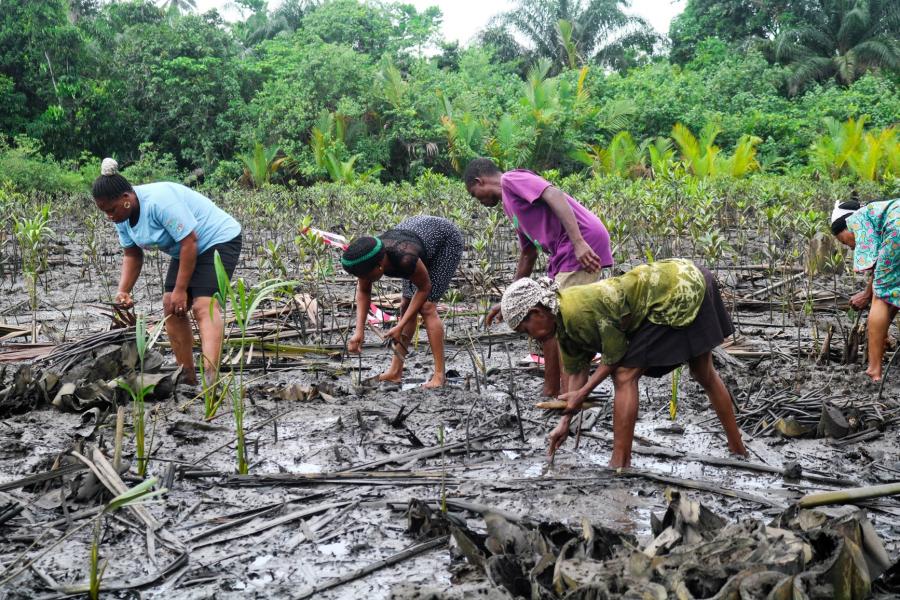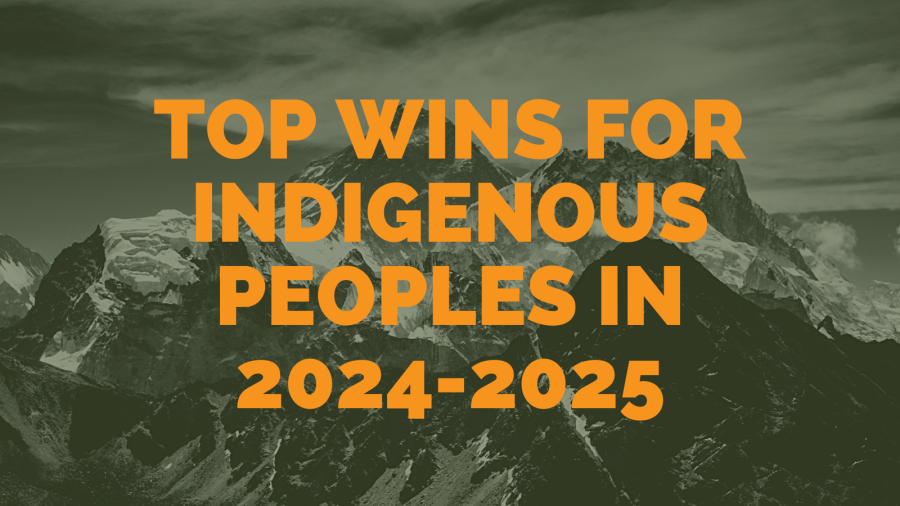After more than 10 years of debate and discussion, the United Nations’ Working Group on the Declaration on the Rights of Indigenous Peoples appears close to reaching agreement on a text.
When the group gathered for its final meeting in Geneva in January, about 20 of the declaration’s 45 articles remained to be discussed, but most of those were matters of minor variations in wording rather than fundamental disagreements over principles. Through the diligent efforts of Norway, which hosted a series of workshops between the regularly scheduled plenary sessions, almost all of that wording was worked out. Two issues, however, remained stumbling blocks: the articles dealing with land rights and the final article, number 45, which spells out the conditions under which states can set aside the declaration’s provisions.
The debates over these issues illustrated the fundamental philosophical differences that have kept this process bogged down for more than a decade. For example, the principal land-rights statement, Article 27, originally said:
Indigenous peoples have the right to redress, by means of restitution or compensation, for the lands, territories, and resources which they have traditionally owned or otherwise occupied or used, and which have been confiscated, occupied, used, or damaged without their free, prior, and informed consent.
But several states, particularly the United States, New Zealand, and Australia, insisted that qualifying terms be added to the language. The article as they proposed it would read:
Indigenous peoples have the right to pursue claims for redress, by means that can include restitution, or, when this is not possible, fair and equitable compensation . . . .
The states were determined to avoid anything that could be interpreted as a commitment to restoring lands or paying for lost territory. They couldn’t even commit to something as generic as “redress,” offering only the right to apply for redress. As several indigenous representatives forcefully pointed out, they have long had that right, and it has done them no good at all. Indigenous delegates, sometimes breaking down in tears, tried over and over to explain that land to them is not simply real estate, but that their culture, their identity, their existence as a people is tied to the land. The diplomats listened politely, perhaps even sympathetically, but it was clear that they, or at least their governments, had no cultural framework to contain these ideas.
Both sides were well aware that the land issue is rooted in historic treaties that in most cases have been abrogated or ignored. But again, the perspectives were contrary. As several indigenous delegates observed, treaties can only be negotiated between sovereign nations, so the mere existence of treaties is proof of indigenous peoples’ right to their land. “The Navajo Nation is here to help the world community understand that First Nations have the right to sovereignty over their lands and territories,” said Navajo Nation Council delegate Ervin Keeswood. “It’s important to understand that our rights as indigenous peoples were not granted by any country. They are inherent.”
For the states, the notion of inherent land rights clearly conjured up visions of lawsuits, uprooted communities, redrawn political boundaries, economic restructuring of businesses and services, and even the unraveling of whole countries. Those concerns reverberated through the debate over Article 26, which reads:
Indigenous peoples have the right to own, use, develop and control the lands, territories, and resources that they possess (or hold) by reason of traditional ownership or other traditional occupation or use, as well as those which they have otherwise acquired.
Charmaine White Face, a delegate of the Teton Sioux Nation Treaty Council, was one of several indigenous representatives who tried to reinforce the idea that they were not interested in using their rights to uproot existing communities. “That first sentence to me is simply saying that indigenous peoples have the right to own land,” she said. “It was not too far in my distant past when it was impossible for my people to buy land off the reservation where we were forced to live. I happen to own land within our traditional territory. All that sentence says is that if I want to buy some more land, then I will have to raise money, but as an indigenous person I have the right to buy land that is within our traditional territory if it’s for sale. That doesn’t mean that I have the right to go in and push someone out. That’s not what this is saying.”
The negotiations over land rights were especially complex because of the wide variety of indigenous circumstances that had to be accommodated. The issue would be complicated enough just defining “traditional use” as a concept equivalent to ownership, but even traditional ownership did not serve all cases. For example, Mattias Ahren of the Saami Council pointed out that reindeer herders follow their migrating herds through lands that may be owned or used by others, yet those lands provide essential feeding grounds for the animals. To address that situation, he proposed adding “or otherwise use” to the list of terms identifying the land to be encompassed by Article 26.
Given the cultural misperceptions and radically different orientations, it’s unfortunate but not surprising that several governments insisted on an escape clause. Article 45 provides that nothing in the declaration is contrary to the U.N. Charter, and, in the version proposed by several states, further proclaims:
The exercise of rights set forth in the declaration shall not impair the enjoyment by all persons of all human rights and freedoms and shall meet the just requirements of public interest and the general welfare in a democratic society, as determined by law.
In other words, indigenous peoples have these rights unless they become inconvenient for the state—an inconvenience that can be countered by passing a law, or by invoking the infinitely flexible term “public interest.”
This was a line in the sand for several states—most notably New Zealand, the United States, and Australia. This sort of language, they said, had been taken out of many individual articles with the understanding that it would be accommodated in the final article. If that final article did not include their proposed exceptions, they said, they would not support the declaration.
Indigenous delegates were similarly resolute, saying that the escape clause invalidated the entire declaration and effectively left the situation between indigenous peoples and governments just as it had always been: with states trampling over indigenous peoples’ rights in the name of eminent domain. They could not compromise on this point, they said. When the chairman observed that every human rights document contains similar language, indigenous representatives replied that those documents refer to individual rights, whereas this declaration deals with collective rights—a concept that seemed to elude some of the diplomats, even after 10 years of discussion. “I’m not the most religious person, but to be honest with you, the past several days I had to go back and pray for these people,” said Gary Harrison, an Athabaskan chief and chairman of the Indigenous Peoples Secretariat of the Arctic Council.
In the end, it was clear that Article 45 could not be resolved by divine intervention or by discussion, despite nonstop meetings 13 hours a day. The chairman decided to step in and write his own version of the article based on each side’s arguments (and in his version, the language of the states’ escape clause is significantly modified).
Although much of the declaration’s history has been marked by dissension, the process has in fact produced real progress in diplomacy and intercultural understanding. Last September Mexico hosted a workshop on the declaration that softened the tough negotiating stances of both sides and laid the groundwork for the resolutions seen in Geneva in January. Canada, a country that long had been an ally of the United States, New Zealand, and Australia, at this session of the working group acted as the peacemaker between states and indigenous delegations. Canadian delegates offered alternative wording to bridge differences, hosted several after-hours workshops to hammer out issues between the parties, and in a departure from past practice, championed indigenous peoples’ concerns.
“A couple of years ago we established a dialogue with Canada and its representatives in the working group,” explains Armand McKenzie, an Innu lawyer representing the Congress of Indigenous Peoples. “We have consultations in Canada, conference calls, and formal meetings where we exchange positions and try to know each other other’s concerns. We would ask, ‘Why is Canada proposing this?’ And we have tried to respond with studies, to say, ‘You shouldn’t be worried about this,’ or, ‘You should accept our wording because of this.’ And they would say, ‘Oh, we didn’t know that about indigenous people.’ Before that, our dialogue was entirely through the microphones at the meetings, which is not very productive. We denounced Canada in the newspapers. Now our conversation is very positive, and that helps. You get to know each other personally, as well, and that’s important.”
The fate of the declaration is uncertain. The working group’schairman, Luis-Enrique Chavez of Peru, has passed it to the Human Rights Commission, which could either accept it as it stands and pass it to the General Assembly for a vote, or send the working group back for more sessions. But the commission itself is in flux. As this issue of Cultural Survival Quarterly goes to press, the United Nations is considering creating a Human Rights Council. The council would have a similar mandate to the commission’s, but would have a different makeup and would function more proactively. The hope is that the shift in structure would not affect the declaration process.
Whatever happens, it is Armand McKenzie’s approach that is likely to be the key to the declaration’s success. Once passed, the only way the declaration will be implemented is if governments and their representatives come to understand indigenous peoples, to appreciate their cultural backgrounds and current needs. And the only way that will happen is through dialogue. If the declaration provides the basis for such a dialogue, then 10 years of effort will have been time well spent.



